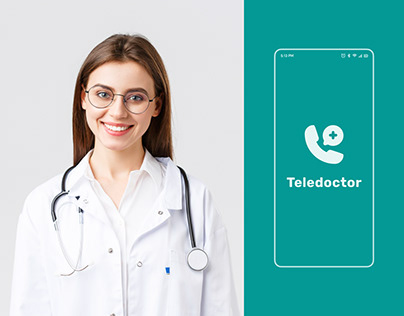Teledoctors vs Typical Healthcare: Which is Better?
Teledoctors vs Typical Healthcare: Which is Better?
Blog Article
Discovering the Advantages and Difficulties of Teledoctors in Modern Medical Care
As the healthcare landscape evolves, teledoctors have emerged as a pivotal element in linking spaces in clinical gain access to and performance. How can the healthcare market balance these advantages with the inherent difficulties?
Expanding Access to Treatment
Telemedicine has become a pivotal development in modern medical care, considerably increasing access to take care of diverse populaces. By leveraging electronic modern technology, teledoctors have actually changed the standard health care distribution model, making it feasible for clients in remote or underserved locations to get prompt medical consultation. This evolution is particularly helpful for people residing in rural areas, where the scarcity of medical care centers and experts usually causes postponed or insufficient therapy.
Teledoctors are critical in linking the gap produced by geographical barriers. Via online appointments, patients can access a vast range of medical care services without the need for comprehensive traveling.
The combination of teledoctors into medical care systems also supports the administration of public wellness crises by helping with rapid response and triage. During pandemics, as an example, virtual appointments minimize the worry on physical healthcare facilities, lessening direct exposure risks for both patients and healthcare companies. As telemedicine remains to advance, it promises to improve the landscape of medical care ease of access, making it a lot more reliable and comprehensive.
Cost-Effectiveness of Teledoctors
The cost-effectiveness of teledoctors is a considerable variable driving their prevalent adoption in healthcare systems. By minimizing the demand for physical facilities and in-person sees, teledoctors offer a more budget friendly alternative to conventional health care distribution. This version enables doctor to reduced functional costs, such as those associated with maintaining physical offices and employing comprehensive on-site team. teledoctors. Consequently, these cost savings can be handed down to people in the kind of reduced assessment charges, making healthcare extra easily accessible to a broader population.
In addition, teledoctors promote an extra reliable use healthcare sources by lessening unnecessary emergency clinic visits and hospital admissions. Individuals can access prompt assessments for small disorders or follow-up care, which aids to ease the burden on overstretched medical care centers. This effectiveness not only leads to cost financial savings for healthcare service providers but also decreases the monetary pressure on clients that may or else encounter costly health center bills.
Furthermore, teledoctors can help in handling persistent illness better by giving constant tracking and timely interventions. This proactive approach can stop difficulties, therefore reducing long-term therapy prices. Generally, teledoctors offer a practical service to the rising costs of medical care, while preserving top quality care delivery.
Enhancing Person Comfort
While cost-effectiveness plays a pivotal duty in the surge of teledoctors, improving person benefit stands as one more compelling advantage of this health care model. With the integration of teledoctors, people can bypass the typically lengthy process of organizing and participating in in-person appointments.
Furthermore, teledoctors supply adaptable organizing, permitting patients to organize assessments sometimes that best match their individual and expert commitments. This versatility is indispensable for individuals stabilizing demanding work schedules or family members responsibilities, ensuring that health care can be incorporated flawlessly into their lives. Additionally, the ability to gain access to doctor from the convenience of one's home can lead to enhanced individual engagement and adherence to treatment plans, as the barriers to seeking treatment are decreased.
The comfort offered by teledoctors not only enhances the patient experience however additionally adds to a more receptive and reliable health care distribution system, ultimately sustaining far better health end results.
Attending To Privacy Issues
Amid the expanding adoption of teledoctors, privacy problems become a considerable factor to consider. As medical care increasingly relies upon digital platforms, guaranteeing the privacy of person information becomes critical. The digitization of clinical records and the use of telecommunication modern technologies demand robust security original site procedures to safeguard delicate data from unauthorized access and breaches.
Medical care companies need to stick to rigorous laws, such as the Health And Wellness Insurance Policy Mobility and Responsibility Act (HIPAA) in the USA, which establishes nationwide requirements for protecting clinical details. Conformity with such guidelines is important in maintaining patient trust and ensuring their data is handled sensibly. Security of data, safe interaction channels, and routine audits are some of the procedures that can be executed to improve data defense.
In spite of these measures, difficulties linger. Cybersecurity risks are progressing, and health care companies have to remain attentive to new susceptabilities. Additionally, educating both people and doctor concerning finest practices in information privacy is crucial. This includes understanding the limitations of electronic communication and the relevance of secure login credentials. teledoctors.
As teledoctors become extra integral to medical care distribution, addressing privacy issues is important to ensure both the efficacy and reliability of these solutions.

Browsing the Digital Separate
Connecting the digital divide is an essential obstacle in the extensive fostering of teledoctors. teledoctors. This divide incorporates differences in access to digital innovation, specifically among country, low-income, and senior populations. These groups usually lack the required devices, dependable net connection, or digital literacy needed for effective engagement in telehealth services. Subsequently, the benefits of teledoctors-- such as raised access and benefit-- remain unreachable for lots of individuals that might most gain from them.
Furthermore, initiatives to support technology for low-income homes can play a critical role in making certain fair access. Medical care providers and community companies ought to collaborate to supply digital literacy programs, empowering patients to browse telehealth platforms with confidence.

Conclusion
The assimilation of teledoctors right into contemporary medical care supplies substantial advantages, consisting of raised accessibility to care, cost-effectiveness, and enhanced person ease. Nonetheless, obstacles such as privacy problems, the electronic divide, and cybersecurity hazards must be resolved to optimize these benefits. By implementing robust data protection actions, boosting digital literacy, and making certain protected technical framework, the potential of teledoctors can be totally realized, promoting equitable healthcare delivery and transforming the medical care experience for all people.

Report this page